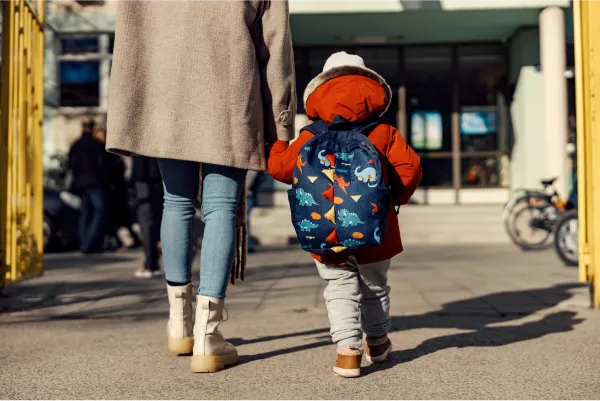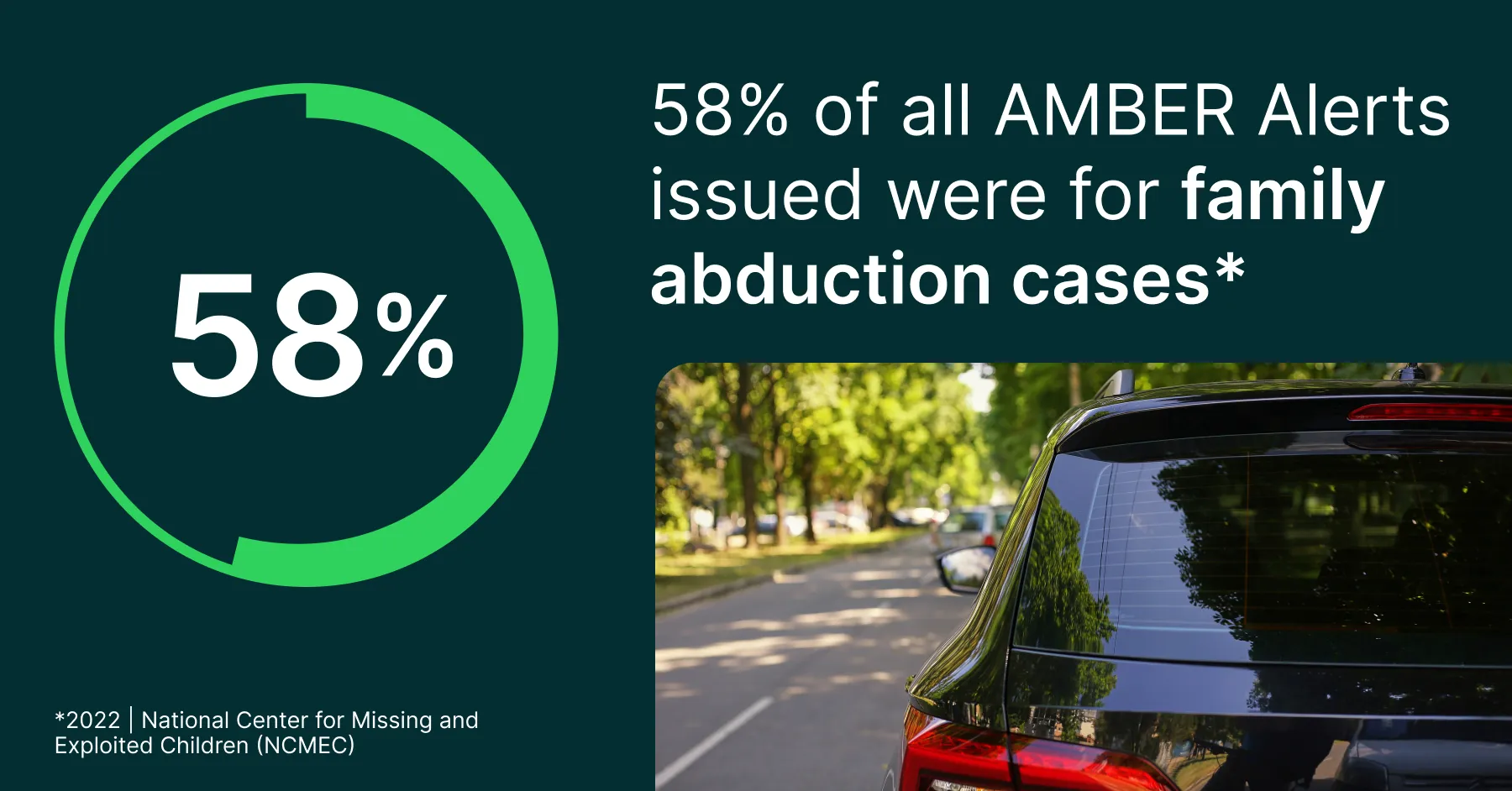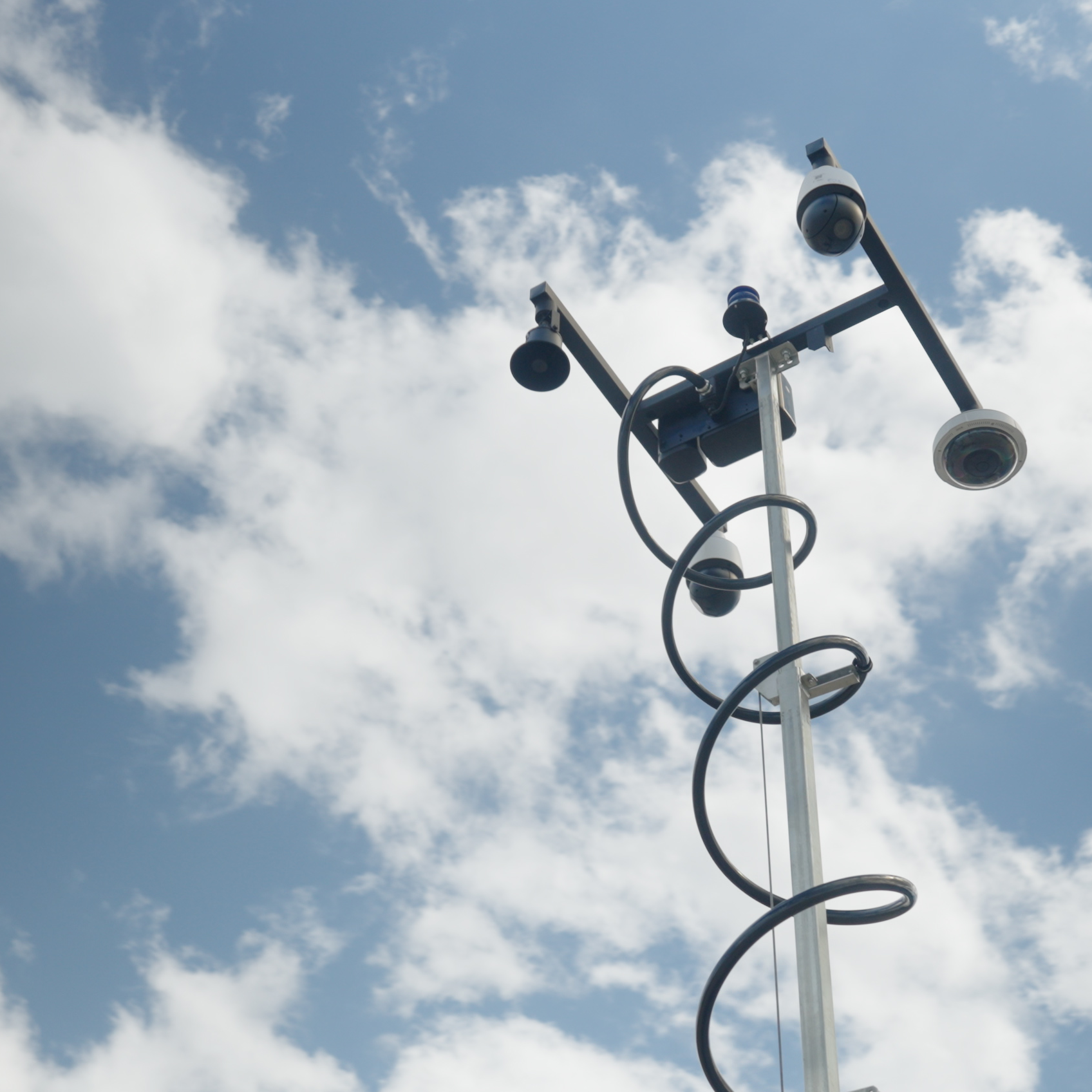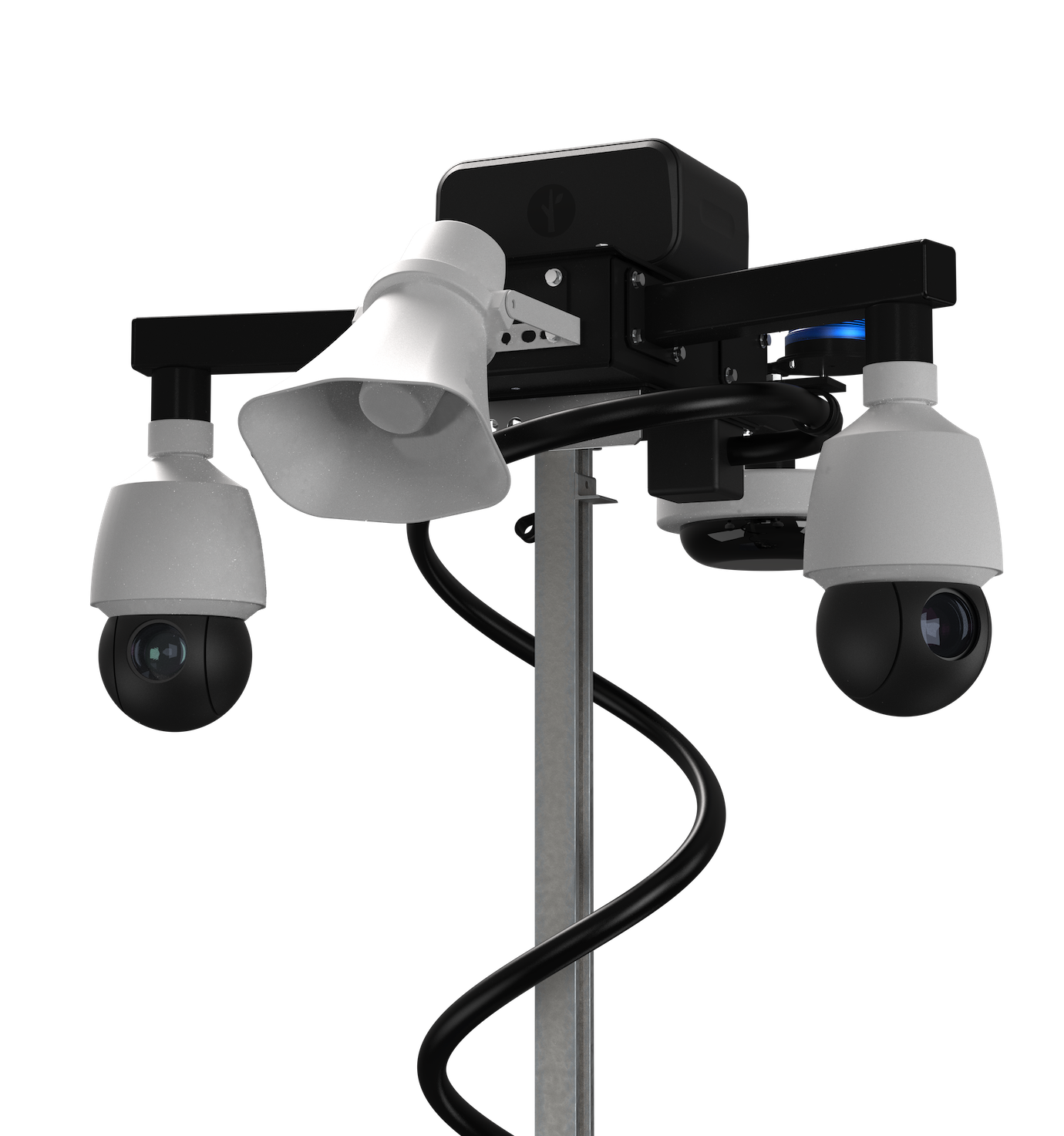


Three Proactive Steps Your School Can Take to Protect Students with Custodial Arrangements
Understanding Custodial Arrangements and School Vigilance
Child custody falls into two categories, legal custody and physical custody. While legal custody encompasses decision-making for the child’s welfare, physical custody specifies the parent that the child will actually live with for the majority of the time.
As a result of a court order, a non-custodial parent is a parent who legally does not have physical custody of their child. Oftentimes, the non-custodial parent is granted visitation rights for certain days of the week, weekends, holidays, or other agreed-upon occasions.
According to The National Center for Missing and Exploited Children (NCMEC), in 2022, 58% of all AMBER Alerts that were issued were for family abduction cases.

In many cases, family abductions can take place amidst divorce or child custody disputes, where a non-custodial parent or relative may attempt to take their child outside of authorized visitation periods.
Schools play a pivotal role in safeguarding children against such incidents, especially during vulnerable moments such as school pick-ups. Recent headlines underscore the importance of school vigilance in preventing such incidents.
With this in mind, schools must proactively implement measures to adhere to custodial arrangements and mitigate potential threats involving non-custodial parents.
Proactive prevention strategies can be categorized into two main strategies: educating faculty and staff and leveraging technology to monitor campus activities.
Educating Faculty and Staff on Child Custody Protocols and Risks
Ensuring student safety begins with thorough education for teachers and staff regarding the intricacies of child custody arrangements and associated risks.
To begin, it’s crucial for educators to understand the various forms of custody and their implications. They should also be mindful of students in their classes who may have designated custody to a specific parent or guardian.
Navigating this aspect can be challenging, given that courts are not obligated to inform schools of parental rights. Therefore, parents must proactively communicate any specific custodial arrangements to the school. Requesting pertinent custodial paperwork at the start of each academic year facilitates this process, allowing teachers and staff to monitor students who may be vulnerable to custodial disputes.
In addition, establishing standardized procedures for student pick-up, early check-out, and parent visitation is crucial. Clear protocols ensure students are only released to their custodial parent, minimizing confusion and potential risks.
Starting at drop-off, taking attendance daily should be a habit, enabling teachers and administrators to track students’ whereabouts throughout the school day.
Furthermore, after-school transportation should be actively managed to prevent students from going home with unauthorized individuals. Whether through a specialized software system or other means, schools should establish approved pick-up persons for each student, mitigating the risk of mishaps.
Finally, enforcing visitation protocols adds an extra layer of security by preventing non-custodial parents from accessing the campus unlawfully. Whether technology to document visitors or an alternative method, consistent training ensures all staff can identify and address unauthorized visitors effectively.
By keeping faculty and staff informed about student custody arrangements and implementing consistent protocols, schools can proactively monitor and address potential risks, fostering a safe learning environment for all students.
Leveraging Technology to Proactively Monitor Custodial Arrangements
Beyond educating faculty and staff on child custody matters, technology is a powerful tool for monitoring potential risks and ensuring student safety.
A fundamental tool that should be implemented for campus security is a visitor management system (VMS). These systems streamline visitor check-in procedures, often requiring identification and issuing visitor name tags. Implementing a VMS not only enhances overall campus safety but also enables staff to verify that incoming visitors hold custodial status when necessary.
Another layer of technology that’s effective for monitoring custodial arrangements is live video cameras. By strategically placing cameras across campus, you’ll ensure that you have the valuable context needed to aid in identifying individuals if needed.
Finally, integrating license plate recognition (LPR) cameras around the perimeter of your campus can act as an additional layer of security. By creating a virtual perimeter with LPR cameras, you’ll be able to ensure that only authorized individuals are on your campus at all times.
Flock Safety LPR cameras have the added benefit of being able to add specific vehicles to a custom Hot List. This functionality enables system administrators to receive notifications if unauthorized vehicles enter the campus, allowing for proactive intervention, especially in cases involving non-custodial parental threats. If they’re alerted that an adult who is banned from a student’s life arrives on campus, administrators can act swiftly, avoiding any escalation of the threat.
Schools witness a constant flow of individuals daily, necessitating vigilance amidst sensitive situations like those involving families with no-contact orders or custodial arrangements. While navigating such complexities can pose challenges, ensuring faculty and staff are well-informed, establishing clear protocols, and harnessing technology as a solution collectively mitigates risk and better safeguards students.
Want to learn more about how Flock can help your school proactively keep your students safe? Schedule time to speak with a school safety expert.
Explore More





Contact us
Discover how communities across the country are using Flock to reduce crime and build safer neighborhoods.

.webp)









